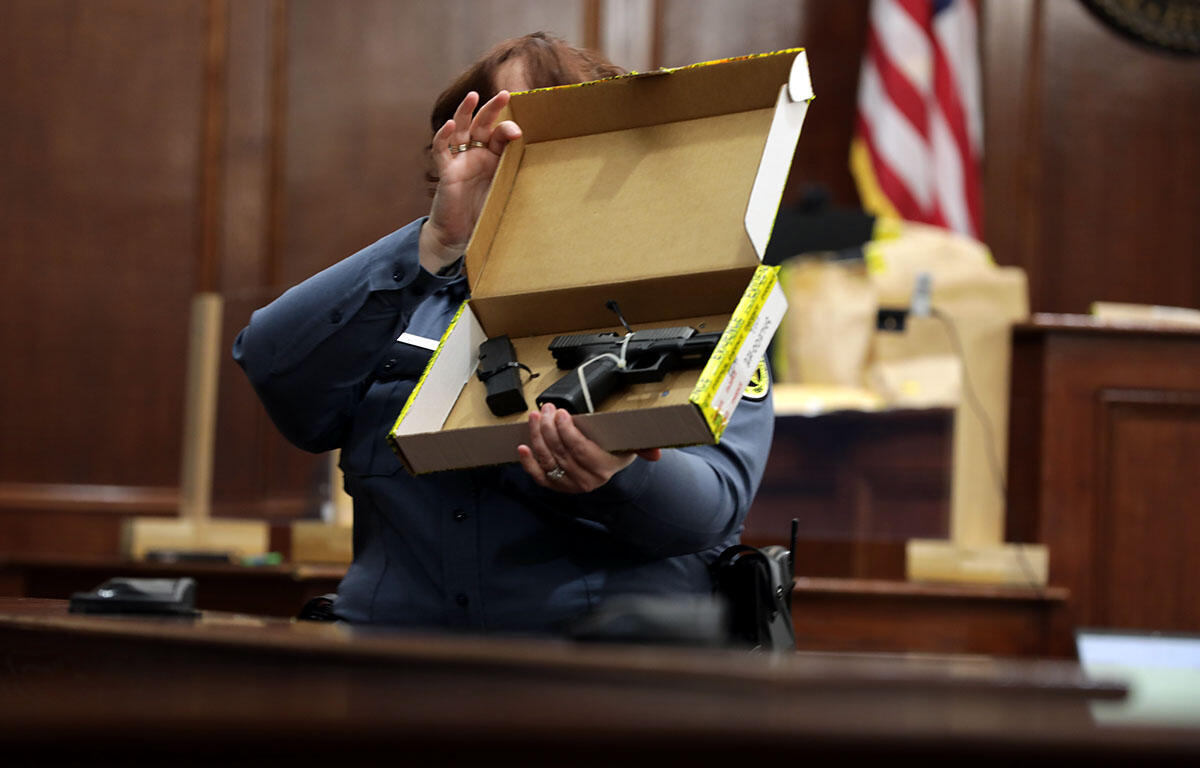CLARKSVILLE, TN (CLARKSVILLE NOW) – As the trial continues for two 20-year-olds charged with the 2021 murder of a teenage boy, the court has seen private Instagram messages, expert testimony for DNA and gunshot residue, and one juror ambulanced out for a medical emergency.
On Dec. 8, 2021, at about 8:42 p.m., Clarksville Police responded to shots fired in the area of Buckshot Drive and Whitetail Drive. Upon arrival, they found 17-year-old Arahmonie Majors lying in the road, dead.

Later that evening, Robert Holland was arrested after a vehicle pursuit and foot chase through Lincoln Homes, and Miracle Bailey was arrested shortly after; both were only 18 at the time.
Here are four takeaways from testimony during the last two days of trial.
1. Instagram messages revealed
Debra Kolofsky, an expert in mobile forensics, took to the stand to explain the digital footprint left behind by the victim and Bailey.
The phone found at the scene where Majors was killed was a phone he shared with his juvenile cousin, as he didn’t have a phone of his own. Majors’ cousin provided detectives with his Instagram account, where they found message history between Majors and the last known account he had been communicating with.
Later, the account name had been changed, the ability to message the user was no longer available. The majority of the messages seemed to be missing, but Kolofsky was able to dig up the deleted message history.

The first message came from Bailey through iMessage at 7:18 p.m., and a few minutes later, another message would be sent to Majors from Instagram through a picture message: “Text me on here cause sb got my password.”
As the conversation between Bailey and Majors continued, she asked him to send his address because she was on the way to his house. At the time, Majors was at Food Lion with his family.
“Who you with? I’m not with my bestie. It’s just me,” Bailey sent to Majors. “He finna be 3rd wheeling.”
Later, Bailey sent this message to Majors: “Hurry up. You know I’m by myself. But it’s just gonna be me and you cause I don’t want your cousin 3rd wheeling.”
“Ight bet,” Majors sent back.
The correspondence went on for over an hour, and at one point Bailey told Majors, “I’m by the yellow bus,” Later, she said multiple times: “Boy, I just walked up to Buckshot St. by the bus!”
At about 8:40, as Majors was walking toward the bus, he called Bailey on video chat. During the chat, Bailey texted Majors one more time before ending the call: “Walk up.”
911 calls reporting shots fired started two minutes later, at 8:42 p.m.
2. Digital breadcrumbs
Kolofsky also found there was an Apple Maps search history on Bailey’s phone of three locations:
- Howard Street in Lincoln Homes (10:21 a.m.)
- Buckshot Drive, in the Whitetail Drive neighborhood (7:59 p.m.)
- Jim Thorpe Drive, Bailey’s home (11:07 p.m.)

Stephanie Hercer, a criminal intelligence analyst with Regional Organized Crime Information Center, used GPS tracking data obtained from Holland’s phone to create a presentation showing his movement through Clarksville on the night of the murder.
Each point mapped was marked within a 100-meter radius of the target.
Based off of Holland’s phone activity, Hercer determined that at 6 p.m., Holland was in the west side of Clarksville before his phone stopped tracking his location for the next two hours. She explained that this could be due to a multitude of reasons, such as having the phone powered off, or using an app without location services turned on.

At 8:31 p.m., Holland’s phone produced a GPS signal in the Whitetail Drive area until 8:41 p.m., when it began to travel toward Exit 11. At 8:44 p.m., it got onto MLK Parkway and then turned onto Madison Street at 8:47 p.m. The last registered GPS signal was at 8:50 p.m.
According to previous reports, at about 8:53 p.m., deputies with the Montgomery County Sheriff’s Office engaged in a vehicle pursuit that started near Madison Street and ended in Lincoln Homes. At the end of this pursuit, Holland was arrested.
3. DNA, gunshot residue, mechanical fingerprint
Many expert witnesses testified, including DNA analysts, GSR experts, and firearms examiners.
Charly Castelbuono, an expert in forensic biology, tested 15 DNA swabs gathered by CPD from the stolen Jeep Cherokee. Many of the swabs came back inconclusive or complex DNA mixtures without enough DNA to test for comparison. However, DNA retrieved from the passenger side interior door handle was positively matched to Bailey.
Tangible DNA for Holland was unable to be individually singled out, and no discernable DNA was retrieved from the handgun recovered at Lincoln Homes, or the 9mm magazine from the Jeep.

Lindsey Anderson, an expert in GSR analysis, revealed gunshot residue on Holland’s skin. Anderson told the court that TBI policy says that if the hand kit (skin test) returns a positive result, there is no need to test the clothing.
Bailey, arrested several hours after Holland, did not test positive for any GSR.
When it comes to the .42 caliber Glock handgun that was recovered in Lincoln Homes, Special Agent Denver Hall, a forensic analyst with the TBI crime lab, determined that the shell casings found at the scene and projectiles retrieved from the victim matched the mechanical fingerprint of the gun.
4. Juror taken out on ambulance
After an extended lunch break, the jury returned to the courtroom around 12:50 p.m.
While hearing expert witness testimony from Castelbuono, Judge William R. Goodman III suddenly called the court to a recess.

When court resumed, Goodman informed the courtroom that one juror was having a medical emergency and had to be taken out by ambulance. The jury will now have one alternate juror when it is time to render a verdict instead of two.
The state has rested its case, and court will resume at 8:30 a.m. Saturday at the Montgomery County Courts Center.


